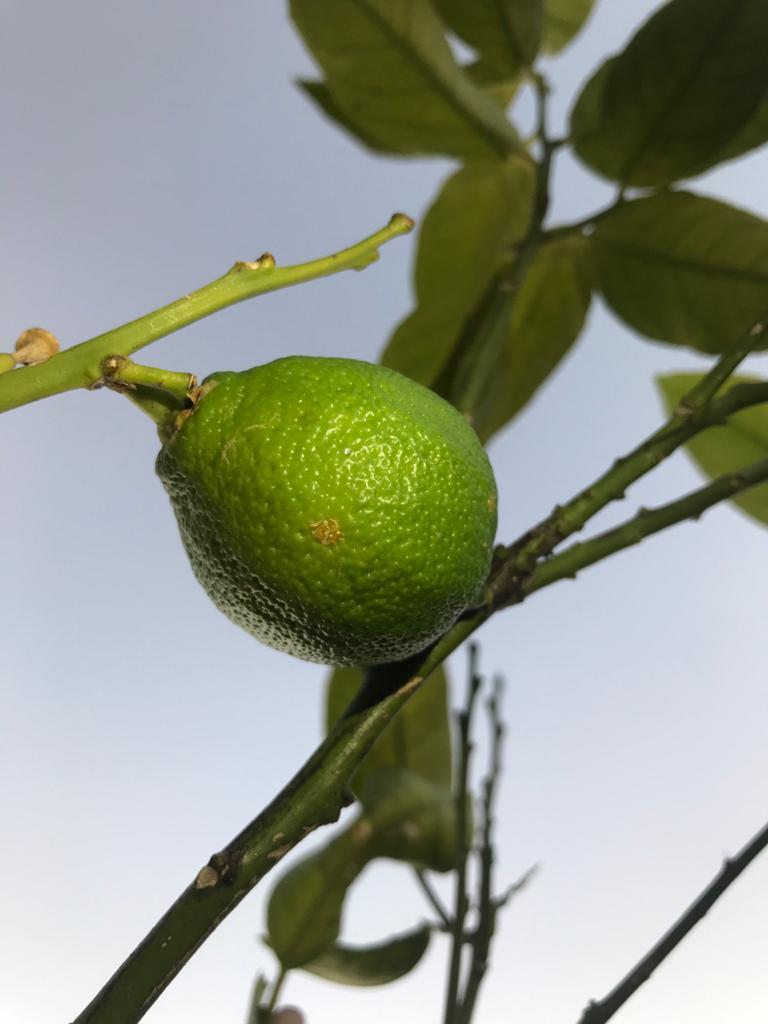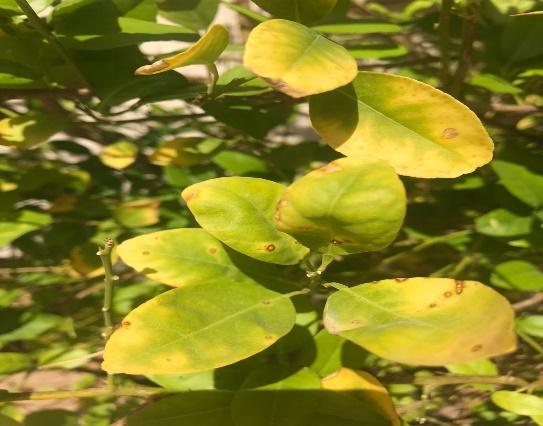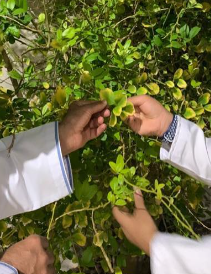Stars and STEM Stories
Bacterial Citrus Ulcers and Their Treatment -- A Study Using Two Protocols

Students from the Al-Hawari Bin Muhammad Al-Azdi School for Basic Education for Boys (Oman) used the GLOBE Vegetation and Soil Protocols to identify and treat diseases in local citrus trees. This research aimed to study bacterial citrus ulcers and their treatment in order to answer the following questions:
- What are the causes of bacterial citrus canker in citrus trees?
- What is the effect of bacterial citrus canker on tree organs?
- What is the effect of bacterial citrus canker on the soil and its properties?
- How to treat citrus trees from bacterial citrus cankers?
The work in this research project was according to a plan that was drawn up to organize the work. They used all protocols to work on the examination, extracting the results, ending with recommendations and research reviews, collecting images, and completing various tables and graphs. After they collected the necessary data, the students analyzed the data and were able to answer some of their starting questions. They found that:
- Through the data they collected, they concluded that the main cause of citrus trees being infected with this disease is a bacteria called Xanthomonas.
- Through our use of the Vegetation Protocol, they found that the tree organs most affected by canker are the leaves, fruits, and twigs. The effect on them was through the appearance of raised, yellow spots with a corky appearance that appear on the surfaces of the leaves, leading to the weakness of the branches and damage to the fruits. However, through an application of the Soil Protocol, they also achieved that the roots are the organs least affected by ulceration.
- Through our application of the Soil Protocol, they found that bacterial citrus canker negatively affects the soil, reducing its fertility. It also leads to an imbalance in the soil’s properties, reducing its ability to be cultivated.
- The students arrived at a way to treat ulcers by scraping large ones that will be a source of infection next year. After pruning, the scraped areas are painted with a paste or sprayed with a plant and natural solution consisting of 10 grams of Omani garlic + 500 ml of water and a chemical solution consisting of 1 kg of copper sulphate + 2 kg of quicklime + 5 liters of water.

At the end of the study, they were able to make recommendations and methods for combating the disease:
- Reviewing agricultural quarantine procedures in the region.
- Monitoring trees for early identification of signs of disease.
- Pruning infected parts during the dry season, and cleaning and sterilizing planting tools between different trees.
- Avoiding working in the field if it rains and leaves get wet.
- Infected trees must be uprooted and disposed of so that they do not become a source of infection.
- Getting rid of leaves, fruits and branches that have fallen on the ground.
Images courtesy Ishaq bin Hamid Al Jabri, GLOBE Oman.






